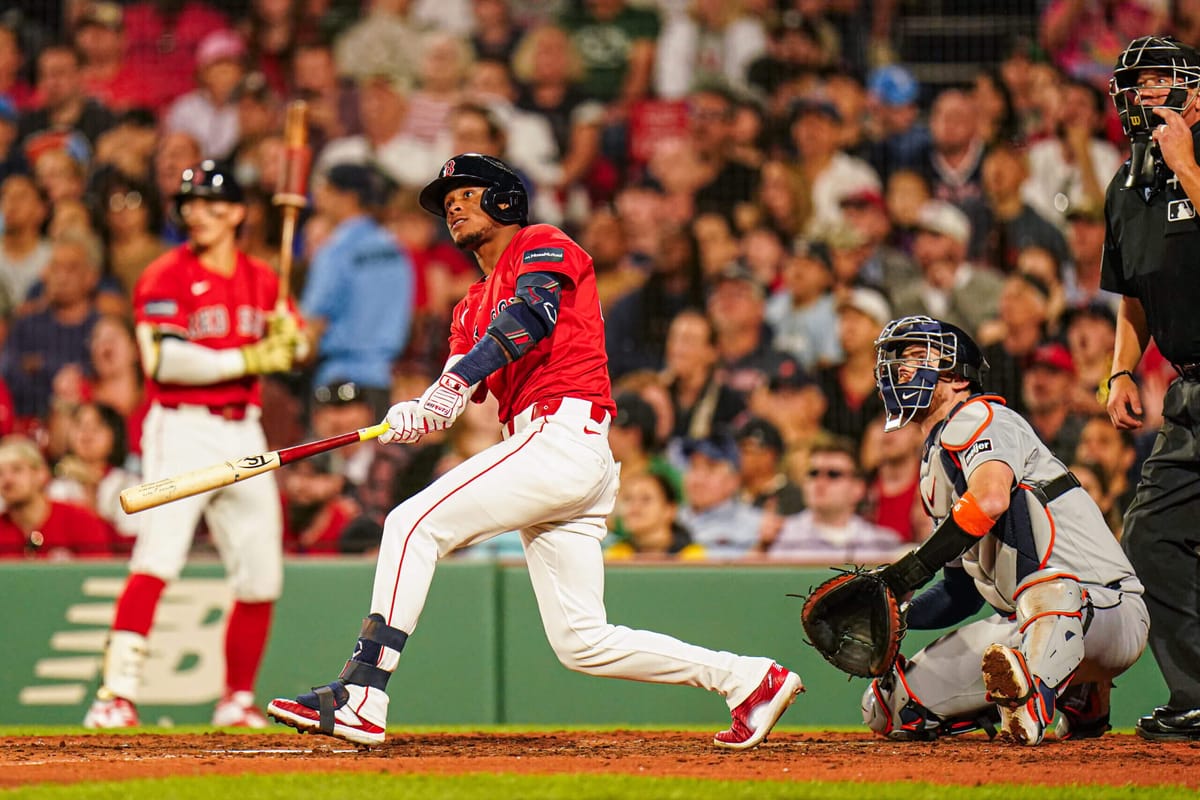Digging into Ceddanne Rafaela's swing adjustments and slow progress at the plate

Source: The New York Times
Author: Jen McCaffrey
BOSTON -- Despite just 86 big league games played, Ceddanne Rafaela's defensive excellence in center field has become an expected part of his game.
So when he dove for a ball after a dead sprint with one out in the sixth inning on Saturday, made the catch, popped up and doubled off the runner at second to end the inning, it might as well have been a forgone conclusion, despite the 5 percent catch probability.
"He's special to watch," said starter Cooper Criswell after a 6-3 Red Sox win. "He's the type of guy when you're not pitching, you're out there watching just always going to expect him to make some type of great play."
Those types of catches are natural for a gifted athlete like Rafaela. What's been more of a struggle for him this season has been finding consistency at the plate in the midst of his first full year in the majors.
On Tuesday in Baltimore, Rafaela tried something different to spark his offense. For the past month in the batting cage, Rafaela had been practicing a new stance in which he brought his hands down a bit, angling his bat upward, rather than holding his hands above his head and his bat flat, almost parallel to the ground. The new stance was designed to allow him to get into his swing quicker and catch up to fastballs. The process of getting a feel for the new stance, locking in cues and timing was gradual, but on Tuesday, hitting coach Pete Fatse suggested to Rafaela he was at a point to try the adjustments in batting practice.
"(Manager) Alex (Cora) was throwing and it was homer to left, homer to right, homer to left," Fatse said. "So it was like, 'OK, let's do it again, but just bring your hands a little bit more up.' It was interesting how we got to where we are now. But yeah, this is exactly what we have been striving for for a while."
Exactly what they've been striving for came Friday night in a two-homer, five-RBI night from Rafaela as the Red Sox beat the Tigers 7-3.
On Saturday afternoon, even after striking out in his first three at-bats, rather than fold in defeat, the rookie slapped a single up the middle in the eighth, stole second and then advanced to third on a throwing error in the win over Detroit.
On the season, his numbers don't look all that impressive, a .212 average and .623 OPS with a 42.6 percent chase rate through his first 58 games. But there has been progress even if it it's hard to see in the overall numbers. Over the final week of May, Rafaela recorded three multi-hit games, going 8-for-23 (.348) with a 1.027 OPS.
In March/April, Rafaela hit .186 with a .561 OPS and 26.3 percent strikeout rate over 30 games. In 27 games in May, he hit .239 with a .698 OPS and lowered his strikeout rate to 25.7 percent all the while flipping between shortstop and center field.
"He understands and knows what we want him to do and that he needs to do it," Cora said. "But it's a comfort thing and little by little he's getting there."
Part of what Fatse and assistant hitting coaches Luis Ortiz and Ben Rosenthal have been helping Rafaela with is relaxing his hands at the plate. They gave him a cue where he very subtly taps his elbows together before the pitch. In the cage, he does another more pronounced drill where he brings the knob of the bat to his knee before his swing, reminding him to lower his hands from his natural position up high. It's also helped him stay in line with the mound.
Rafael Devers made a similar adjustment at the plate entering the year, bringing his hands from high over his head to a much lower slot now. As velocity increases across the league, the reduced movements of the bat helps players get to the ball quicker.
A veteran hitter like Devers was able to make the adjustment relatively quickly after years in the league. Rafaela is still working on his swing adjustments, but it's slowly trending in the right direction.
"There's still a lot of growth in his game," Fatse said. "You can't replicate time. You just can't. We try to with the stuff we do underneath in the cage, we try to speed that process up as best as we can. But the real test comes at 7 p.m. So for us, it's a lot of -- we discuss something, we talk about it, we watch the results, we review, it's just this constant process. So I think that he's in a place now where he feels comfortable with the adjustments. And it's like, 'OK, let's see how they manifest with the game plan.' He's doing a really good job and it's not easy. I just think the biggest challenge is always time, it just takes time."
It's no secret the Red Sox have been patient with rookies in the past with Triston Casas starting out 2023 slow at the plate and Jarren Duran struggling through 2022. For Fatse it's a mix of trusting the talent, but also finding the necessary adjustments to help the player.
"You don't get here unless you have the talent," he said. "You have to have the gift to get here. And I believe what keeps you here is your ability to make adjustments. Talent will keep you here for a while. But the ability to play night-in, night-out is about adjustments. The hope is as you go, these young guys get to know themselves a little bit better, and then those curves become more gradual and less steep. And it just becomes these rolling waves, not these drastically steep waves."
Rafaela has shown time and again the ability to make split-second adjustments in the outfield, and now he's putting that same mentality to work at the plate.
